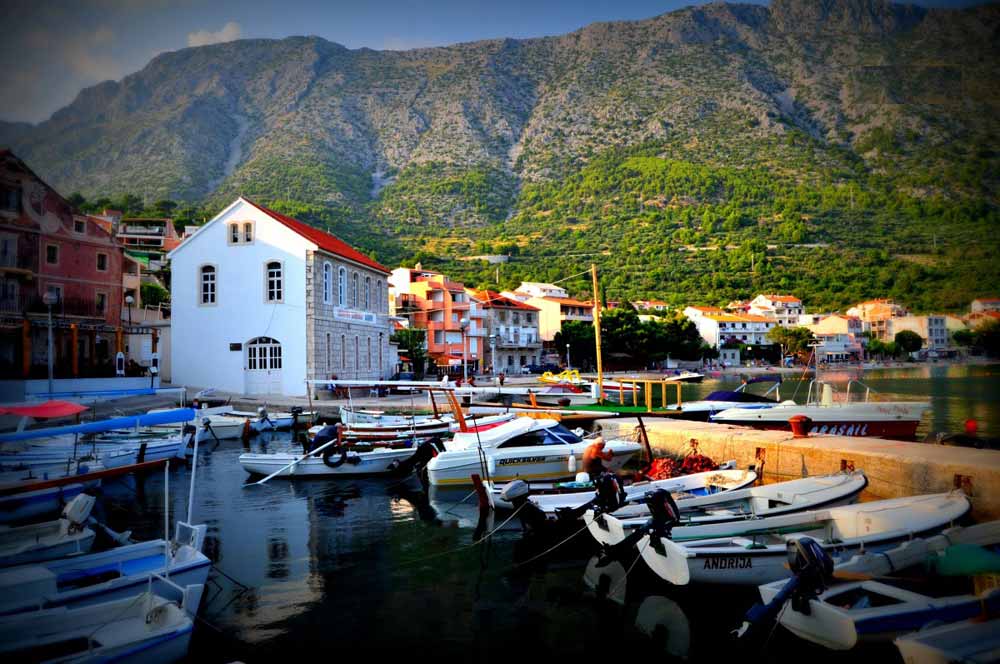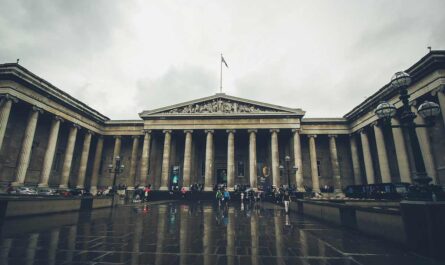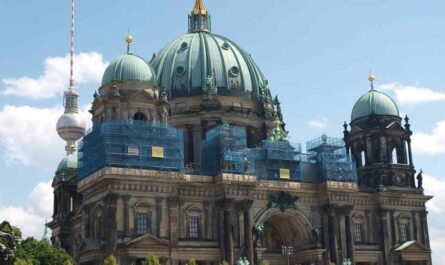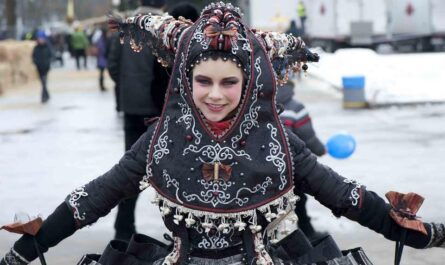Fun facts about Croatia will inspire you to visit this European country. Croatia beckons visitors with a rich tapestry of experiences, inviting them to explore its ancient history and bask in the natural splendor of its national parks and pristine beaches. Whether one is captivated by the allure of Roman monuments or seeks solace amidst tranquil offshore islands, Croatia promises an abundance of attractions to satiate every traveler’s wanderlust.
Fun Facts about Croatia
From the mists of the Paleolithic Age to the vibrant present-day, Croatia bears witness to an enduring tapestry of human civilization. Inhabited since antiquity, its storied landscapes have echoed with the footfalls of countless generations, each leaving their indelible mark upon the land. From ancient settlements to modern metropolises, Croatia’s history unfolds like chapters in a timeless saga, revealing the resilience and fortitude of its people in the face of adversity.
1. Rakija: Croatia’s National Drink
At the heart of Croatian hospitality lies rakija, the nation’s beloved traditional drink. While shared with other Balkan countries, Croatia’s unique twist involves sipping on herbal rakija, particularly travarica, accompanied by dried figs as a delightful precursor to a meal. This aromatic spirit, crafted with meticulous care and infused with local herbs, serves as a symbol of conviviality and cultural heritage, offering a taste of Croatia’s rich culinary traditions.
2. Dubrovnik: A Historical Gem
Dubrovnik’s Old Town stands as a testament to Croatia’s storied past and captivates history enthusiasts with its timeless charm. Renowned as one of Croatia’s most picturesque cities, Dubrovnik has enchanted travelers since the 19th century Grand Tours of Europe. Within its ancient walls lie magnificent cathedrals, monasteries, and fountains, each bearing witness to the city’s illustrious heritage. Once an autonomous trade republic rivaling Venice in power, Dubrovnik exudes an aura of grandeur and sophistication, inviting visitors to stroll through its historic streets and immerse themselves in its rich cultural legacy.
3. Island Escapes and Valley Adventures
Beyond Dubrovnik’s historic confines, Croatia’s coastal treasures beckon adventurers to explore pristine islands and verdant valleys. Mljet and Korcula Islands, nestled off the coast, offer idyllic settings for sun-kissed beaches, exhilarating diving, and mesmerizing snorkeling adventures. Meanwhile, the Konavle Valley invites nature lovers to embark on scenic walking and horseback riding routes, traversing picturesque landscapes adorned with vineyards and olive groves. Viator offers an array of excursions that showcase the highlights of these enchanting destinations, ensuring memorable experiences for all who venture forth.
4. Rijeka International Carnival: A Festive Extravaganza
The Rijeka Carnival stands as a testament to Croatia’s vibrant cultural heritage, steeped in centuries of tradition and revelry. Dating back through the annals of time, this illustrious carnival showcases a kaleidoscope of festivities, including the iconic ‘ugly masks’ believed to ward off malevolent spirits. Street parties pulsate with infectious energy, while the renowned International Parade draws participants from across the globe, adding an eclectic flair to the celebrations. A dedicated Children’s Parade ensures that the youngest revelers partake in the merriment, creating cherished memories for generations to come. With extravagant displays of feasting and libations, the Rijeka Carnival captivates the hearts and imaginations of hundreds of thousands of attendees, heralding the arrival of joy and camaraderie each January 17th.
5. Tomislav’s Coronation: Croatia’s Monarchical Legacy
In a pivotal moment in Croatia’s history, Tomislav ascended to the throne in 925, marking the dawn of a new era as the country’s inaugural king. With his coronation, Croatia embraced monarchy, solidifying its status as a sovereign nation with a rich heritage and royal lineage. Tomislav’s reign ushered in an era of unity and prosperity, laying the groundwork for Croatia’s enduring legacy as a bastion of independence and sovereignty in the heart of Europe.
6. Zlatni Rat Beach: Nature’s Ever-Changing Canvas
Nestled upon the idyllic island of Brac, Zlatni Rat Beach captivates visitors with its enchanting beauty and ever-changing landscape. Renowned for its shifting form and kaleidoscopic hues, the beach is a testament to the whims of nature and the influence of the elements. Carved by the winds and currents, Zlatni Rat’s pristine shores offer a mesmerizing tableau of colors and textures, inviting beachgoers to bask in the splendor of Croatia’s coastal paradise. As a symbol of nature’s artistry, Zlatni Rat Beach remains a cherished jewel in Brac’s crown, captivating the imagination of all who venture to its shores.
7. Dubrovnik Carnival: A Timeless Tradition
For over six centuries, the Dubrovnik Carnival has graced the cobbled streets of the city’s center, infusing the historic Stradun Street with a kaleidoscope of color and revelry. Amidst a sea of fantastical costumes and futuristic attire, residents and visitors alike immerse themselves in the festivities, transported to a realm of medieval splendor and whimsy. The air resonates with the sounds of street theater performances and live music, while riders clad in medieval armor add a touch of chivalry to the proceedings. Jousting tournaments, masquerade balls, and jubilant street celebrations punctuate the main procession, creating an unforgettable spectacle that celebrates the spirit of Dubrovnik’s vibrant cultural heritage.
8. Etymology of Croatia: Unveiling Linguistic Roots
The name “Croatia,” known in Croatian as “Hrvatska,” traces its origins to Medieval Latin “Crotia.” This Latin appellation, in turn, finds its roots in the native ethnonym of Croats, reflected in the older form “*Xrvate” and the contemporary Croatian term “Hrvati.” Through centuries of linguistic evolution, the name of Croatia has endured as a testament to the enduring identity and heritage of its people, encapsulating a legacy of resilience and cultural continuity that spans generations.
9. Battling Mosquitoes: Summer Pests in Croatia
In Croatia, mosquitoes emerge as ubiquitous companions, particularly during the sweltering summer months when their numbers surge. Drawn by the allure of hot weather and warm waters, these pesky insects descend upon the nation in droves, posing a persistent nuisance to residents and tourists alike. While their presence is a familiar sight throughout the country, the summer months witnessed a notable spike in mosquito activity, prompting vigilant measures to mitigate their impact. From insect repellents to protective clothing, combating mosquitoes becomes an essential aspect of navigating Croatia’s outdoor landscapes during the warmer seasons.
10. Croatian Statehood Day: A Tribute to Independence
Each June, Croatian Statehood Day serves as a poignant reminder of the nation’s journey to sovereignty and self-determination. Commemorating the genesis of an independent Croatia emerging from the tumultuous aftermath of war, this solemn occasion unites the populace in reflection and celebration. Throughout the country, a blend of official ceremonies and grassroots initiatives pays homage to Croatia’s resilience and unity, underscoring the enduring spirit of its people. It’s crucial to note that Statehood Day in June is distinct from October’s Independence Day, each holding its significance in Croatia’s storied narrative of nationhood.
11. Vinkovci: An Ancient Legacy
Nestled in eastern Croatia, Vinkovci stands as a testament to the resilience of human civilization, boasting a remarkable legacy of nearly 8,000 years of continuous habitation. As one of Europe’s oldest cities, its storied streets bear witness to the ebb and flow of history, from ancient civilizations to modern times. Amidst its timeless landscapes, Vinkovci preserves traces of bygone eras, offering a captivating glimpse into the tapestry of human existence that has unfolded within its hallowed confines.
12. Pula Arena: A Triumph of Roman Engineering
In the coastal city of Pula, Croatia, the Pula Arena stands as a marvel of ancient architecture and engineering prowess. As the world’s sole surviving Roman amphitheater with four side towers, it serves as a testament to the ingenuity of Roman civilization. Among the rarest examples of Roman architecture, the Pula Arena stands alongside just two other structures worldwide in maintaining its structural integrity over the centuries. As the sixth-largest amphitheater on the planet, it stands as a timeless symbol of Croatia’s rich heritage and cultural heritage, beckoning visitors to marvel at its grandeur and historical significance.
13. Dubrovnik’s Ingenious Sewage System
Dubrovnik, known for its timeless beauty, also boasts a lesser-known claim to fame as one of Europe’s pioneers in medieval sanitation. Remarkably, it was home to one of the continent’s earliest sewage networks during the Middle Ages. This innovative system, a testament to the city’s forward-thinking approach to urban planning, underscored Dubrovnik’s commitment to public health and hygiene. Its existence serves as a testament to the ingenuity of past civilizations and stands as a reminder of Dubrovnik’s enduring legacy of innovation and progress.

14. Pisanica Eggs: Symbol of Croatian Easter
Easter in Croatia is a vibrant celebration steeped in tradition, with the beautifully adorned Pisanica Eggs taking center stage as emblematic symbols of the holiday. With origins dating back to Slavic pagan rituals, these intricately decorated eggs became intertwined with Christian Easter observances as early as the 9th century. The festivities commence on Palm Sunday, marked by nocturnal parades featuring religious symbols in cities across the country. Along the coast, residents don traditional attire, serenade the night with hymns, and reenact biblical narratives while adorning city gates with festive decorations. The Pisanica Eggs serve as enduring symbols of renewal and rebirth, embodying the spirit of Easter in Croatia.
15. Dubrovnik: The “Adriatic Pearl” of Lord Byron’s Era
In the early 19th century, Dubrovnik garnered widespread acclaim as the “Adriatic Pearl,” a moniker bestowed upon it by the esteemed English poet Lord Byron. Renowned for its picturesque vistas and cultural richness, Dubrovnik captivated the imagination of visitors and poets alike with its timeless charm. Byron’s poetic tribute to the city immortalized its beauty and allure, casting Dubrovnik as a radiant gem adorning the azure waters of the Adriatic Sea. This epithet endures as a testament to Dubrovnik’s enduring appeal and its status as a jewel of the Adriatic coast.
16. Osijek Worldwide Pannonian Challenge: Extreme Sports Extravaganza
For aficionados of extreme sports, the Osijek Worldwide Pannonian Challenge stands as a premier event not to be missed. Drawing international celebrities and exceptional amateurs alike, this adrenaline-fueled spectacle showcases the talents of daredevils in disciplines such as stunt riding, mountain biking, skateboarding, and inline skating. Against the backdrop of Osijek’s vibrant streets, participants captivate audiences with gravity-defying feats and awe-inspiring performances, all set to the cheers of a large and enthusiastic crowd. As a celebration of athleticism and courage, the Pannonian Challenge epitomizes the spirit of adventure and camaraderie, making it a highlight on the calendar of extreme sports enthusiasts worldwide. How AI, ChatGPT maximizes earnings of many people in minutes
17. Seasonal Delights: Croatia’s Varied Charms
Summer in Croatia beckons travelers with the allure of sun-drenched beaches and azure waters, offering the perfect backdrop for a rejuvenating seaside retreat. With an array of low-cost flights from Europe, embarking on a beach trip becomes an accessible and enticing prospect for holidaymakers. However, savvy travelers may also find the late shoulder season to be an opportune time to visit, as the sunny and pleasant weather persists while lodging prices dip, making it an ideal period for touring and beach activities without the crowds.
Additionally, March presents an ideal window for exploring Croatia’s national parks, as the melting of mountain snow unveils breathtaking landscapes, creating prime conditions for trekking and nature appreciation. Whether basking in the summer sun or embracing the tranquility of the shoulder season, Croatia offers an abundance of experiences to suit every traveler’s preferences and interests. Motivation – Mind – Success – Thinking – Productivity – Happiness
18. A Chapter in Yugoslav History
For much of the 20th century, Croatia was an integral part of the former Yugoslavia, a multiethnic federation that emerged from the ashes of World War I. Within this union, Croatia played a pivotal role in shaping the nation’s political and cultural landscape, contributing to its rich tapestry of diversity and unity. However, the dawn of a new era dawned in 1991, as Croatia embarked on a journey towards independence, forging its path as a sovereign nation and reclaiming its rightful place on the world stage. Business – Money Making – Marketing – E-commerce
19. Europe’s Cradle of Civilization
Nestled within Croatia’s hallowed borders lies the ancient town of Vinkovci, a testament to Europe’s rich heritage and cultural legacy. With roots dating back to antiquity, Vinkovci stands as the continent’s oldest town, a living testament to the resilience and ingenuity of its inhabitants. Amidst its timeless streets, echoes of bygone eras reverberate, offering a poignant reminder of humanity’s enduring quest for progress and enlightenment. As Europe’s cradle of civilization, Vinkovci serves as a beacon of history, beckoning travelers to uncover its secrets and unravel the mysteries of the past. Health books, guides, exercises, habits, Diets, and more
20. Croatia: A Nation of Croats
At the heart of Croatia’s vibrant cultural tapestry lies its people, with the majority of the population identifying as Croats. Proud inheritors of a rich heritage spanning centuries, Croatians embody the spirit of resilience, unity, and cultural diversity that defines the nation. From the picturesque coastlines to the rugged mountainscapes, Croatians leave an indelible mark on their homeland, shaping its history, traditions, and aspirations for the future. Fitness – Meditation – Diet – Weight Loss – Healthy Living – Yoga
21. Football: A National Passion
In the hearts and minds of Croatians, football—known as soccer in some parts of the world—holds an unrivaled place of honor and passion. From the bustling streets of Zagreb to the sun-drenched stadiums of Split, the fervor for football permeates every facet of Croatian society. With a storied legacy that includes iconic clubs such as Dinamo Zagreb and Hajduk Split, as well as historic achievements on the international stage, football serves as a unifying force that transcends boundaries and unites communities in shared jubilation and triumph. Whether cheering on their beloved national team, the Vatreni, or rallying behind local clubs, Croatians’ love for football knows no bounds, fostering a sense of camaraderie and pride that resonates throughout the nation. RPM 3.0 – 60% CONVERSION & Money for Affiliate Marketing
We know you have enjoyed these interesting, fun facts about Croatia!
More Interesting Articles




